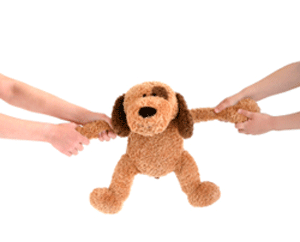
Adapted from “When You’re Stuck in the Middle,” by Susan Hackley (Managing Director, Program on Negotiation), first published in the Negotiation newsletter.
At a company in a Midwestern city, employees were divided into two camps: those loyal to the founder and his vision of a mom-and-pop business with a dozen regional stores, and those aligned with the CEO, who hoped to open one hundred or more stores nationwide. Employees from the two groups rarely visited one another’s offices and avoided collaborating. One group even ate lunch at a different time than the other.
Ray, a midlevel assistant manager, wanted to do something about the ongoing conflict. Relatively new to the company, he felt no strong allegiance to either side and sensed that the divisions were harming the company and making it difficult for him to do his job. Though he had no official role or mandate, Ray decided to take action. The problem was, he had no idea where to begin.
Many of us have been bystanders to a conflict that causes us real harm. In his book The Third Side: Why We Fight and How We Can Stop (Penguin Books, 2000), anthropologist William Ury gives advice to those stuck in the middle of a difficult conflict. For would-be negotiators who don’t want to engage directly in conflict—for reasons such as fear or lack of knowledge, resources, or authority—the role of the third side provides an alternative.
Become a problem-solving negotiator. “Many people look at conflict and think, ‘It’s not my job to fix that problem,’ or ‘I feel helpless when faced with conflict,’” says Ury. “We think of conflicts as having two sides in opposition. In reality, the community often plays an important role.” This community—which might be made up of neighbors, friends, relatives, bystanders, and others—is what Ury calls the third side. Third parties can “facilitate the prevention and resolution of conflict,” and “together they can be a more powerful force than a leader acting alone,” he says.
Ury observed people in societies around the world who took on responsibility to help prevent, contain, or resolve conflict. In The Third Side, he describes 10 roles that bystanders can play in helping to bring about peace in their organizations or communities:
1. The provider helps people meet their needs, share ideas and resources, and feel protected.
2. The teacher gives lessons in tolerance and joint problem-solving skills.
3. The bridge builder forges relationships, fosters dialogue, and helps develop joint projects.
4. The mediator brings parties to the table and helps reconcile conflicting interests.
5. The arbiter determines disputed rights and promotes justice.
6. The equalizer helps build a collaborative democracy.
7. The healer repairs injured relationships.
8. The witness calls attention to early warning signs and escalation.
9. The referee establishes rules for fighting and helps strengthen defenses.
10. The peacekeeper enforces the peace and preempts violence.
The problem-solving negotiator helps alleviate conflict by taking on one or more of the 10 bystander roles that best meet her interests and suit her negotiation style. Of course, no one person should expect to perform strongly in each of these roles. “It can be empowering to know that there’s a role that you can play that will fit with your negotiating style,” says Ury. “We’re all affected by conflict, and knowing that there’s a role for you can make you feel less helpless.”





It is striking that several of Ury’s roles describe Organizational Ombuds. As “inside outsiders,” ombuds: provide information and empathy; teach conflict skills; mediate and facilitate between parties; and warns of and identifies systemic problems.